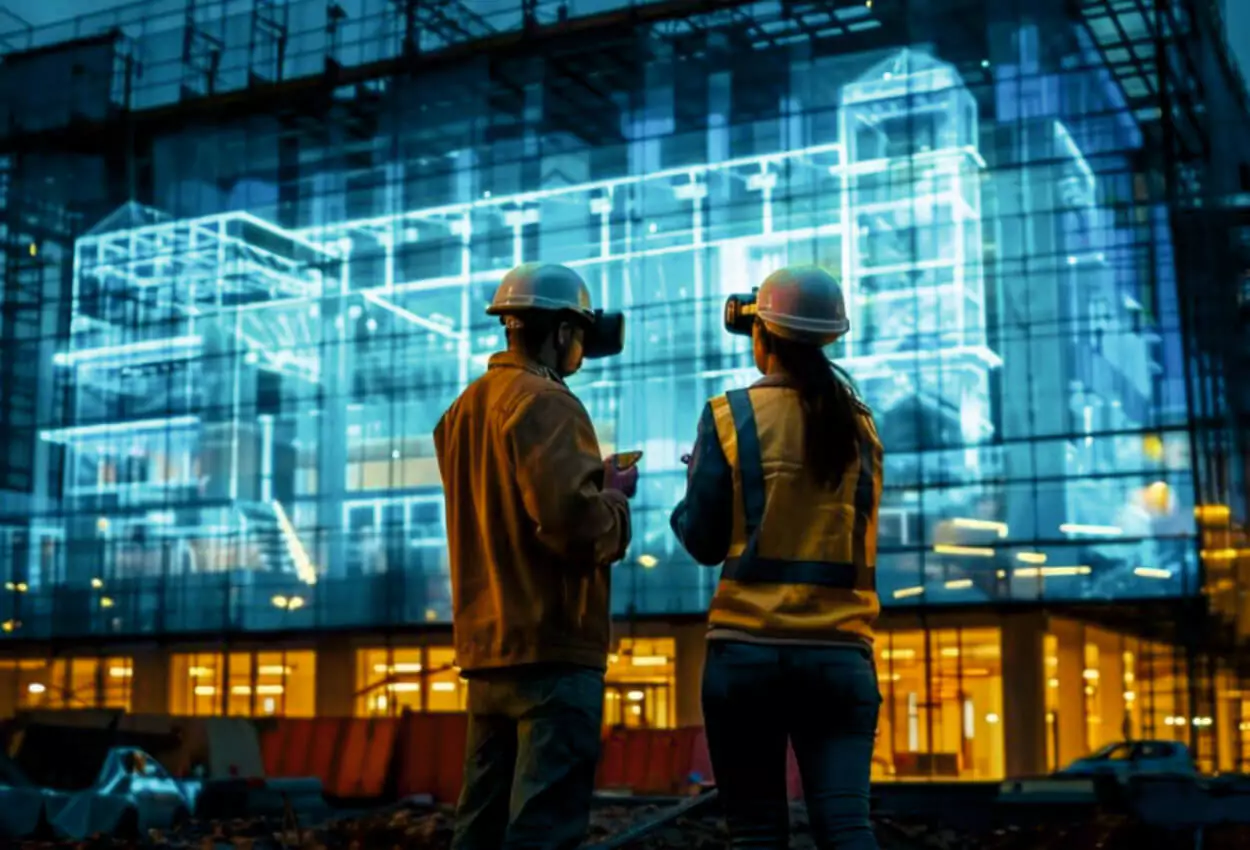In recent years, the construction industry has been undergoing a significant transformation fueled by technological advancements. One of the most innovative concepts to emerge is the digital twin—a virtual replica of physical assets, processes, or systems. Digital twins are increasingly being integrated into construction projects, enabling improved planning, execution, and maintenance. This article explores the concept of digital twins, their applications in construction, and the benefits they bring to the industry.
Understanding Digital Twins
A digital twin is essentially a digital replica of a physical object or system that uses real-time data to create a dynamic simulation of its physical counterpart. This concept originated in the manufacturing sector but has rapidly expanded into various industries, including construction, healthcare, and smart cities. By leveraging the Internet of Things (IoT), artificial intelligence (AI), and data analytics, digital twins provide a comprehensive view of a project’s lifecycle—from initial design through construction and into ongoing maintenance.
The digital twin encompasses not just the physical attributes of a building or infrastructure project but also its operational behavior, enabling stakeholders to visualize and analyze performance metrics in real time. This capability allows for enhanced decision-making and more efficient management of resources throughout the lifecycle of a project.
Applications of Digital Twins in Construction
- Design and Visualization: During the design phase, architects and engineers can create digital twins to visualize complex structures and evaluate design choices before construction begins. This visualization aids in identifying potential issues early, reducing costly changes during the build phase. Using Building Information Modeling (BIM) in conjunction with digital twins allows teams to create highly detailed representations of a project, fostering collaboration among stakeholders.
- Construction Monitoring: Digital twins can be employed to monitor the construction process in real time. By integrating IoT sensors with the digital twin model, project managers can track progress, assess quality, and ensure compliance with safety standards. This real-time monitoring allows for swift identification of issues, enabling teams to address them before they escalate into larger problems.
- Predictive Maintenance: Once a construction project is completed, digital twins continue to play a vital role in the maintenance phase. By continuously collecting data on the building’s performance, such as energy usage, structural integrity, and environmental conditions, digital twins can help facility managers predict when maintenance is required. This proactive approach minimizes downtime, reduces costs, and extends the lifespan of the asset.
- Energy Management: Digital twins can assist in optimizing energy efficiency within buildings. By simulating different scenarios, facility managers can analyze energy consumption patterns and identify areas for improvement. This capability is particularly relevant in the context of sustainability and regulatory compliance, as buildings are increasingly required to meet stringent energy efficiency standards.
- Collaboration and Communication: Digital twins enhance collaboration among various stakeholders involved in a construction project. By providing a shared digital platform, architects, engineers, contractors, and clients can communicate more effectively. This centralized information repository ensures that everyone is working from the same data set, reducing misunderstandings and promoting transparency.
Benefits of Digital Twins in Construction
The integration of digital twins into construction projects offers numerous advantages:
- Improved Accuracy: Digital twins provide a high level of accuracy in representing physical assets, allowing for better planning and execution. This precision helps reduce errors and minimizes the need for rework, ultimately saving time and money.
- Enhanced Decision-Making: Access to real-time data and predictive analytics enables stakeholders to make informed decisions. By visualizing different scenarios, project managers can evaluate the potential impact of various choices before implementing them.
- Cost Efficiency: The use of digital twins can lead to significant cost savings throughout a project’s lifecycle. By identifying issues early, optimizing resource allocation, and reducing maintenance costs, organizations can improve their bottom line.
- Increased Collaboration: Digital twins foster a collaborative environment where all stakeholders can access and contribute to the project data. This collaboration enhances communication and promotes a shared understanding of the project goals.
- Sustainability: Digital twins contribute to sustainable construction practices by enabling better resource management and energy optimization. By simulating the environmental impact of different design choices, organizations can make more environmentally responsible decisions.
Challenges and Considerations
While the benefits of digital twins in construction are substantial, there are also challenges that organizations must navigate. One significant hurdle is the initial investment in technology and training. Implementing digital twin technology requires a commitment to upskilling employees and investing in IoT devices, software, and data analytics capabilities.
Data security is another concern, as the collection and storage of vast amounts of data raise issues related to privacy and cybersecurity. Organizations must ensure that they have robust measures in place to protect sensitive information.
The Future of Digital Twins in Construction
Looking ahead, the role of digital twins in construction is expected to expand further. As the construction industry continues to embrace digital transformation, the integration of AI, machine learning, and advanced data analytics will enhance the capabilities of digital twins. These technologies will enable even more sophisticated simulations and predictive models, leading to smarter, more efficient construction practices.
Conclusion
Digital twins represent a revolutionary advancement in the construction industry, offering a powerful tool for enhancing project planning and maintenance. By enabling real-time monitoring, predictive maintenance, and improved collaboration, digital twins are transforming how construction projects are designed, executed, and managed. As the industry continues to evolve, embracing digital twin technology will be essential for organizations seeking to remain competitive and responsive to the changing demands of the market. By leveraging the power of digital twins, construction firms can not only improve their operational efficiency but also contribute to a more sustainable and innovative future.



